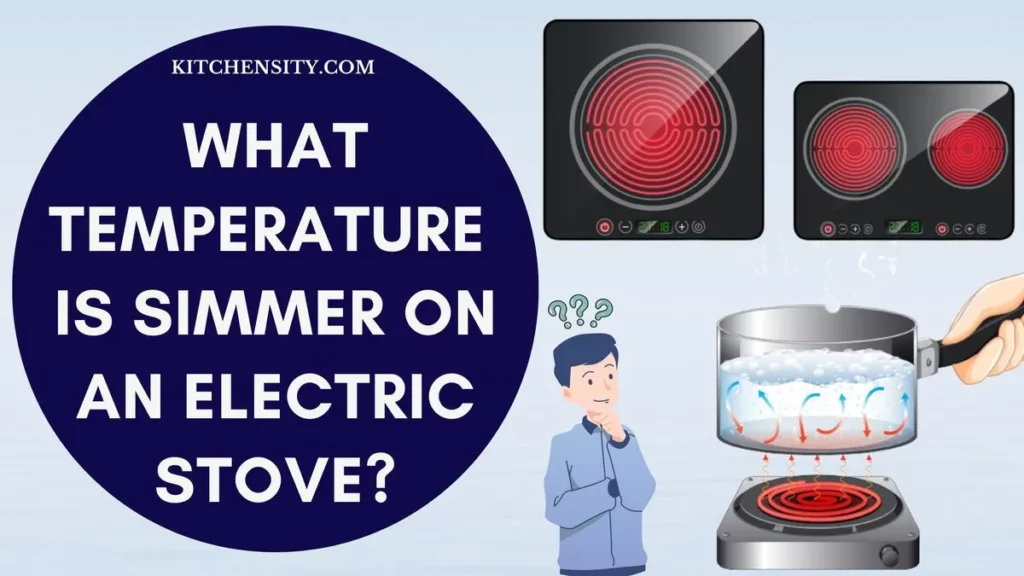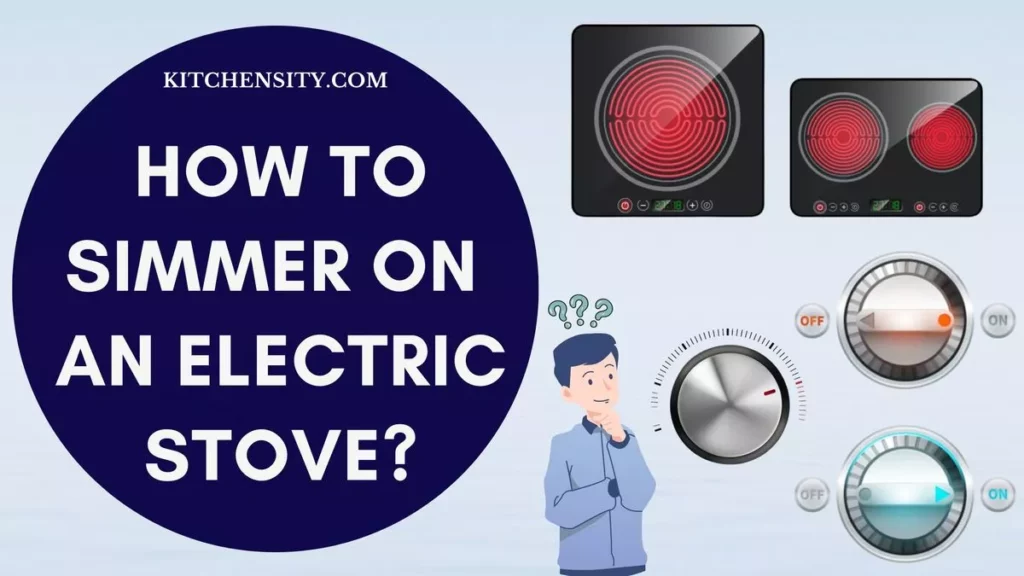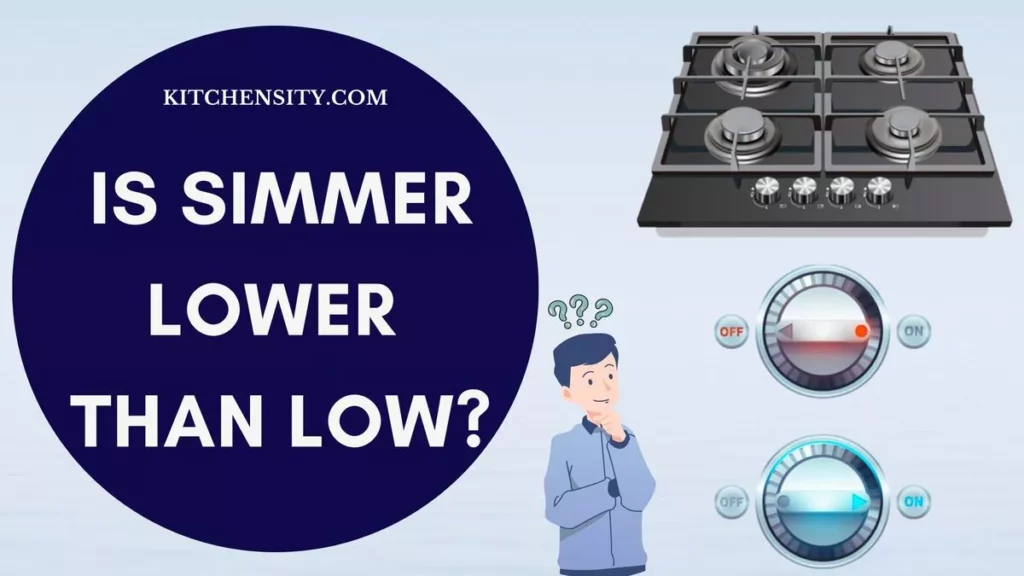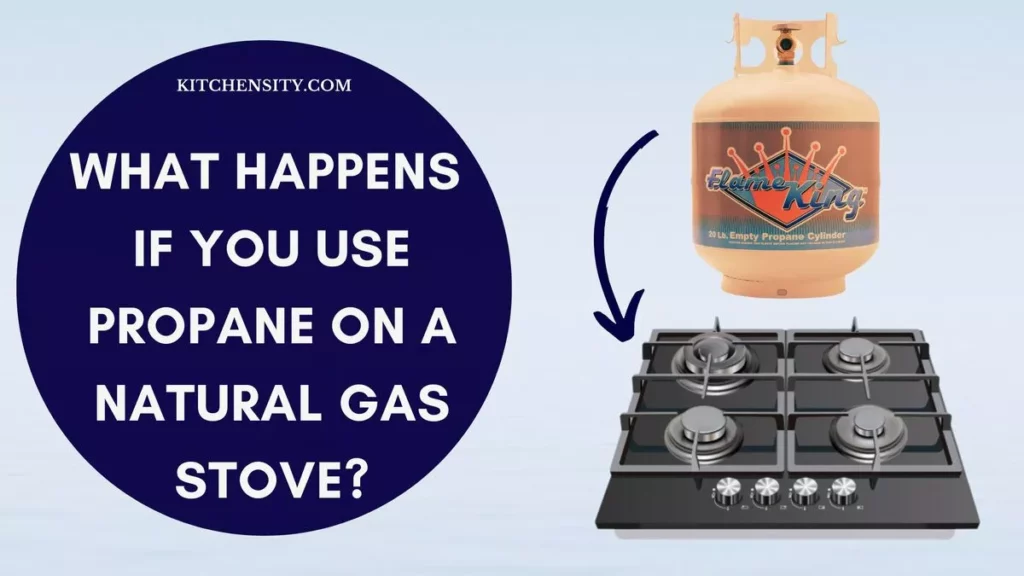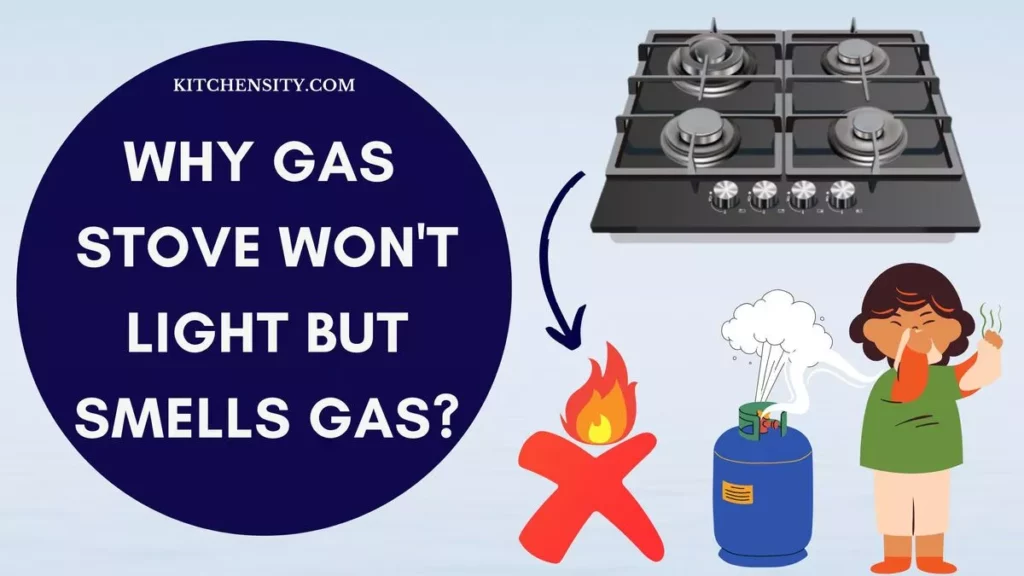Gas stoves are essential appliances in our kitchens, providing efficient and precise heat for cooking various dishes. However, like any other household equipment, gas stoves can encounter problems over time, disrupting our cooking routines.
In this article, we will explore the most common gas stove problems faced by users and provide practical solutions to resolve them, ensuring your kitchen remains a hub of culinary creativity.
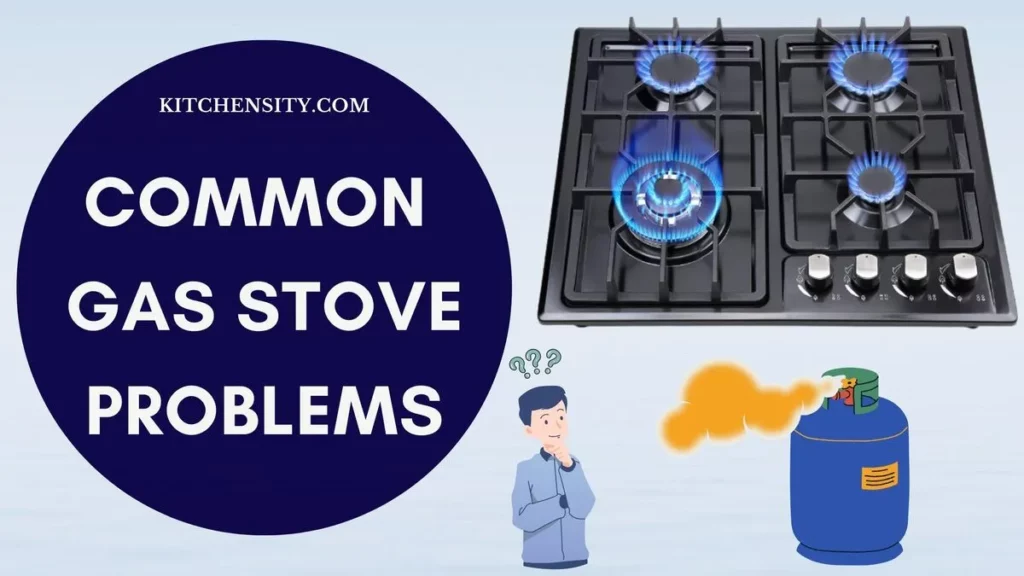
Table of Contents
- 1 Common Gas Stove Problems
- 2 Problems With Oven Functionality
- 3 How Do You Know When Your Gas Stove Is Going Bad?
- 4 What Is The Average Life Of A Gas Stove?
- 5 What Are The Issues With Gas Stoves?
- 6 Auto Ignition Gas Stove Problems
- 7 Gas Stove Harmful Effects
- 8 Gas Stove Maintenance Tips
- 9 Final Thoughts
- 10 FAQs: Common Gas Stove Problems
- 10.1 Gas Stove Burner Problems
- 10.2 Why Does My Gas Stove’s Burner Keep Clicking Even After Lighting?
- 10.3 What Should I Do If I Smell Gas Near My Stove?
- 10.4 How Can I Prevent Burner Clogs On My Gas Stove?
- 10.5 Why Is My Gas Stove’s Pilot Light Not Staying Lit?
- 10.6 How Often Should I Have My Gas Stove Professionally Inspected?
Common Gas Stove Problems
Common gas stove problems include ignition issues, uneven flames, gas leaks, clogged burners, weak flames, faulty thermocouples, and pilot light malfunctions. These problems are discussed in detail below.
1. Ignition Problems
One of the frustrating issues many gas stove users face is difficulty in lighting the burner. You might hear a clicking sound without the burner igniting, leaving you puzzled and hungry. This problem often stems from faulty ignition systems or clogged components. To tackle this, check for any visible blockages and clean the ignition components regularly. If the problem persists, consulting a professional technician is advisable.
Also Read – How Do We Know If There Is A Gas Leak?
2. Uneven Flames
Cooking efficiency heavily depends on even flame distribution. Uneven flames can result from various factors, including irregular gas flow, burner misalignment, or clogged openings. Not only does this affect your cooking but it can also damage your cookware. To address this, ensure burners are correctly aligned, clean clogged openings using a fine wire, and check the gas supply for consistency.
3. Gas Smell And Leaks
A gas leak is a serious and potentially life-threatening issue. If you notice a strong gas smell near your stove, it is crucial to act immediately. To identify a gas leak, listen for hissing sounds, check for a rotten egg odor, or use soapy water to detect bubbles around connections. In case of a leak, turn off the gas supply, open windows for ventilation, and contact a professional technician for repairs.
Also Read – Can Gas Stoves Explode?
4. Burner Clogging
Burner clogging is a common problem caused by food residue, grease, or debris blocking the burner openings. This can disrupt the flame pattern and affect cooking performance. Regular cleaning with mild soap and water, along with periodic maintenance, prevents clogging issues. Additionally, avoid using oversized cookware that may block burner openings.
5. Weak Flames
Weak flames can hamper your cooking experience, leading to longer cooking times and unevenly prepared dishes. This problem often arises due to low gas pressure, partially opened gas valves, or clogged burners. Check the gas supply, ensure valves are fully open, and clean burners meticulously. If the issue persists, it might be time to replace the burner or consult a technician.
Also Read – Gas Stove Leaking Gas From Burner: What To Do?
5. Thermocouple Malfunctions
The thermocouple is a safety device that shuts off gas flow when the pilot light is out, preventing gas leaks. If your gas stove’s pilot light keeps going out, the thermocouple might be malfunctioning. Signs include difficulty in keeping the pilot light lit or inconsistent burner operation. Replacing the faulty thermocouple resolves this issue and ensures safe stove operation.
6. Faulty Gas Regulator
A faulty gas regulator can lead to irregular gas flow, affecting burner performance. Indications of a faulty regulator include weak flames, burner flickering, or inconsistent heating. It’s crucial to address this issue promptly by replacing or repairing the gas regulator. Professional assistance is recommended for this task to ensure proper installation and safety.
Also Read – My Gas Stove Making Noise When Off: Why?
7. Pilot Light Issues
If your gas stove’s pilot light refuses to stay lit, it could be due to a malfunctioning thermocouple, gas valve issues, or drafts affecting the pilot flame. Check for drafts near the stove, clean the pilot assembly, and ensure the thermocouple is positioned correctly. If the problem persists, professional inspection and repair might be necessary.
8. Gas Stove Clicking Continuously
Continuous clicking sounds from your gas stove, even after lighting the burner, can be both annoying and concerning. This issue often results from moisture or grease accumulation in the ignition system, disrupting the spark. Clean the ignition components thoroughly and ensure they are completely dry to resolve the continuous clicking problem.
Also Read – Are Natural Gas And Propane Interchangeable?
9. The Gas Stove Keeps Turning Off
Imagine preparing a delicious meal, only for your gas stove to keep turning off unexpectedly. This frustrating problem could be caused by issues such as faulty thermocouples, gas valve problems, or irregular gas supply. Check for proper gas flow, clean thermocouples, and inspect the gas valve for any faults. If the problem persists, professional assistance is necessary to diagnose and fix the underlying issue.
10. Uneven Heating
Uneven heating on your gas stove’s cooktop can lead to unevenly cooked food. Factors such as burner misalignment, worn-out burner components, or gas pressure imbalances contribute to this problem. Regularly inspect and maintain your gas stove, ensuring burners are correctly aligned and components are in good condition. This ensures uniform heat distribution for optimal cooking results.
Also Read – How To Convert A Natural Gas Stove To Propane?
Problems With Oven Functionality
Gas stoves with ovens can face unique problems, including issues with temperature regulation, uneven baking, or the oven not heating up. These problems can arise due to faulty thermostats, heating elements, or gas flow issues.
1. Temperature Regulation Issues
One common problem with gas stove ovens is inaccurate temperature regulation. This can lead to uneven baking and cooking outcomes. If your oven is not reaching the desired temperature or if it’s getting too hot, it might be due to a faulty thermostat. Over time, thermostats can wear out or become misaligned, causing temperature discrepancies. Calibrating the thermostat or replacing it, if necessary, can resolve this issue.
Also Read – Why Is My Gas Stove Not Clicking?
2. Uneven Baking And Cooking
Uneven baking or cooking is often caused by poor heat distribution within the oven. This can result from damaged or malfunctioning heating elements, irregular gas flow, or improper placement of racks. To ensure even baking, it’s essential to inspect the heating elements for signs of wear or damage. Additionally, positioning the racks at the correct height in the oven can help distribute heat more evenly across your dishes.
3. Oven Not Heating Up
If your gas oven is not heating up at all, it might be due to a faulty igniter, gas valve, or electronic control board. The igniter is responsible for lighting the gas in the oven. If it’s not functioning correctly, the oven won’t heat up. Similarly, a malfunctioning gas valve or electronic control board can disrupt the flow of gas and prevent the oven from reaching the desired temperature. Checking and replacing these components, if necessary, can restore your oven’s functionality.
Also Read – Orange Flame On The Gas Stove: Causes & Fixes
4. Gas Smell During Oven Use
If you notice a gas smell when you’re using your oven, it could indicate a gas leak. Gas leaks are hazardous and require immediate attention. The smell might be caused by a leaking gas line, faulty gas valve, or damaged oven seal. It’s crucial to turn off the gas supply, ventilate the area, and contact a professional technician to inspect and repair the gas oven safely.
5. Uneven Flame In The Oven
Similar to stovetop burners, gas ovens can also suffer from uneven flames. This can result from clogged burner openings, irregular gas flow, or misaligned burner components. Regularly cleaning the burner openings and ensuring proper gas flow can help maintain a consistent flame in the oven. If the problem persists, consulting a technician is advisable.
Also Read – How To Fix A Yellow Flame On A Gas Stove?
6. Pilot Light Problems
Older gas ovens often have pilot lights that need to stay lit for the oven to function. If the pilot light keeps going out, it could be due to a faulty thermocouple or drafts affecting the flame. Cleaning the pilot assembly, checking for drafts, and ensuring the thermocouple is positioned correctly are essential steps to troubleshoot pilot light issues.
How Do You Know When Your Gas Stove Is Going Bad?
Recognizing the signs that your gas stove is going bad is essential for ensuring your safety, preventing potential hazards, and avoiding inconvenient breakdowns. Here are several indicators that can help you determine when your gas stove might be experiencing issues:
- Uneven Cooking: If you notice that your food is not cooking evenly, with some parts being overcooked while others are undercooked, it could indicate a problem with the burner’s flame distribution or heat output. This can affect the quality of your meals and is a sign that your gas stove might need attention.
- Yellow Or Flickering Flames: Healthy gas burner flames should be predominantly blue with a small, steady yellow tip. If you observe consistently yellow flames or flickering flames, it suggests incomplete combustion, which can be a sign of a ventilation problem, clogged burner ports, or improper air-to-gas ratio. Yellow flames can also produce more carbon monoxide, a dangerous gas.
- Delayed Ignition: When you turn the knob to ignite the burner and there’s a noticeable delay before the flame appears, it could indicate an issue with the ignition system or gas flow. Delayed ignition can lead to a buildup of gas, creating a potential safety hazard.
- Excessive Noise: Unusual noises such as hissing, whistling, or banging sounds coming from your gas stove could signal a gas leak, a blockage in the gas line, or issues with the burner components. Any strange sounds should be investigated promptly.
- Gas Smell: If you detect the distinct odor of gas in your kitchen, it is a clear indication of a gas leak. Gas leaks are extremely dangerous and require immediate action. Evacuate the area, ventilate, and contact emergency services and a professional technician to locate and repair the leak.
- Pilot Light Problems: For gas stoves equipped with a pilot light, if the pilot light keeps going out and requires frequent relighting, it indicates a problem with the thermocouple, gas valve, or drafts affecting the flame. Ignoring this issue can lead to unreliable stove operation.
- Difficulty Adjusting Flames: If you find it challenging to adjust the flames, whether they’re too high or too low despite adjusting the knobs, it suggests a problem with the gas valve or regulator. Inconsistent flame control can impact your cooking experience.
- Age Of The Appliance: Gas stoves have a lifespan, and older appliances are more prone to wear and tear. If your gas stove is approaching or has surpassed its expected lifespan, it’s more susceptible to developing problems. Consider replacing it if repairs become frequent and costly.
- Rusting Or Visible Damage: Physical damage, rust, or corrosion on the stove’s body, burners, or other components can compromise its structural integrity and safety. Damaged parts should be repaired or replaced promptly.
- Inefficiency And Increased Gas Bills: A gas stove that is no longer functioning efficiently may require more gas to produce the same amount of heat. If you notice a sudden increase in your gas bills without a corresponding increase in usage, your stove might be inefficient and in need of repair or replacement.
Also Read – Why Gas Stove Won’t Light But Smells Gas?
What Is The Average Life Of A Gas Stove?
The average lifespan of a gas stove typically ranges between 15 to 20 years with proper care and maintenance. However, several factors can influence the longevity of a gas stove:
- Quality Of The Appliance: Higher-quality gas stoves from reputable manufacturers tend to have better components and construction, leading to a longer lifespan. Cheaper or lower-quality stoves may wear out sooner.
- Maintenance: Regular maintenance, including cleaning burners, checking gas lines, and ensuring proper ventilation, can significantly extend the life of a gas stove. Timely repairs and addressing issues promptly also contribute to its longevity.
- Frequency Of Use: A gas stove that is used frequently may experience wear and tear more quickly than one that is used sparingly. However, consistent use can also prevent certain issues that arise from long periods of inactivity.
- Proper Usage: Using appropriate cookware, avoiding heavy impacts on the stovetop, and following the manufacturer’s guidelines for temperature settings and cleaning can prevent damage and prolong the stove’s life.
- Technological Advances: Newer gas stoves may have advanced features and materials that enhance their durability and efficiency. Stoves with digital controls and electronic ignition systems might have different lifespans compared to older, traditional models.
- Environmental Factors: The environment in which the stove is placed can influence its lifespan. Exposure to moisture, heat, or corrosive substances can accelerate wear and reduce the appliance’s longevity.
- Repairs And Replacements: The willingness and ability to repair or replace faulty components also impact the overall lifespan. Regular maintenance and timely replacement of worn-out parts can keep the stove functioning well beyond its initial years.
While the average lifespan falls within the 15 to 20-year range, some well-maintained gas stoves can last even longer. It’s important to assess the condition of the stove periodically, especially as it approaches the 15-year mark, to determine if repairs or replacements are necessary.
Also Read – What Happens If You Use Propane On A Natural Gas Stove?
What Are The Issues With Gas Stoves?
Gas stoves, while efficient and widely used, can experience various issues over time. Here are common problems associated with gas stoves:
- Ignition Problems:
- Difficulty in lighting the burner.
- Continuous clicking without ignition.
- Uneven Flames:
- Uneven flame distribution.
- Flickering or yellow flames.
- Gas Smell And Leaks:
- Strong gas odor near the stove.
- Hissing sounds indicate a gas leak.
- Bubbles form when applying soapy water to connections, indicating a leak.
- Burner Clogging: Clogged burner ports due to food residue or debris.
- Weak Flames:
- Burners produce weak flames.
- Partially opened gas valves cause low gas flow.
- Thermocouple Malfunctions:
- Malfunctioning thermocouple leading to pilot light issues.
- Difficulty in keeping the pilot light lit.
- Faulty Gas Regulator:
- Irregular gas flow affecting burner performance.
- Weak or flickering flames due to gas pressure imbalances.
- Pilot Light Problems:
- The pilot light frequently goes out.
- The pilot light not staying lit, affecting burner ignition.
- Continuous Clicking: The stove continues clicking even after ignition.
- Stove Turning Off: The gas stove turns off during use, disrupting cooking.
- Uneven Heating:
- Burners or ovens do not provide consistent heat.
- Hot spots on cookware due to uneven flame distribution.
- Problems With Oven Functionality:
- The oven not heating up to the desired temperature.
- Uneven baking or cooking inside the oven.
- Faulty thermostat affecting temperature regulation.
- Gas Odor During Oven Use: The smell of gas while using the oven, indicates a leak or improper combustion.
- Rusting And Physical Damage:
- Rusting or corrosion of stove components.
- Visible damage to burners, grates, or control knobs.
- Difficulty Adjusting Flames: Issues with flame control, make it challenging to adjust the burner intensity.
Also Read – Are Propane Stoves Safe Indoors?
Auto Ignition Gas Stove Problems
Auto-ignition gas stoves offer convenience and ease of use, but they can also experience specific problems associated with their ignition systems. Here are some common issues related to auto-ignition gas stoves and possible solutions:
1. Ignition Clicking Continuously
- Problem: The ignition continues clicking even after the burner has ignited.
- Possible Causes:
- Moisture or food debris around the ignition switch.
- Misalignment of burner components.
- Solution:
- Clean the area around the ignition switch with a dry cloth to remove moisture or debris.
- Ensure the burner components, including burner caps and crowns, are properly aligned.
Also Read – Can Electric Stoves Explode?
2. Ignition Not Clicking Or Not Sparking
- Problem: The ignition does not produce sparks when the knob is turned.
- Possible Causes:
- Faulty ignition switch or electrode.
- Wiring issues.
- Solution:
- Check for loose or damaged wires and connections. Repair or replace as necessary.
- If the ignition switch or electrode is faulty, they may need replacement by a qualified technician.
3. Weak Or No Spark At Ignition
- Problem: The sparks produced by the ignition are weak or nonexistent.
- Possible Causes:
- Worn-out or damaged ignition electrodes.
- Low battery power in battery-operated ignition systems.
- Solution:
- Clean or replace the ignition electrodes if they are dirty or damaged.
- For battery-operated ignitions, replace the batteries and ensure they are properly inserted.
Also Read – My Electric Stove Burner Stays On High! Why?
4. Delayed Ignition
- Problem: There is a noticeable delay between turning the knob and ignition.
- Possible Causes:
- Airflow issues affecting combustion.
- Low gas pressure.
- Solution:
- Check for obstructions in the gas supply line or burner components.
- Ensure the gas pressure is within the recommended range. Consult a technician if necessary.
5. Inconsistent Ignition Across Burners
- Problem: Some burners ignite more easily than others.
- Possible Causes:
- Uneven gas flow.
- Differences in the distance between the ignition source and burner components.
- Solution:
- Clean clogged burner ports to ensure even gas flow.
- Adjust the positioning of the ignition electrodes to ensure a consistent spark across all burners.
Also Read – Do Electric Stoves Use Gas?
6. Continuous Clicking After Burner Ignite
- Problem: The clicking sound persists even after the burner has ignited.
- Possible Causes: Moisture or grease causes a short circuit in the ignition system.
- Solution:
- Thoroughly dry the area around the ignition switch and electrode.
- Clean the ignition components regularly to prevent moisture or grease buildup.
If you encounter persistent issues with the auto-ignition system despite attempting these solutions, it is advisable to seek assistance from a qualified technician or the stove’s manufacturer for professional repair and maintenance.
Gas Stove Harmful Effects
Gas stoves, while essential in many households for cooking, can pose certain harmful effects. It’s important to be aware of these potential risks to take necessary precautions:
- Carbon Monoxide Poisoning: Gas stoves can produce carbon monoxide, a colorless and odorless gas that is highly toxic. Improper ventilation or a malfunctioning stove can lead to carbon monoxide buildup, causing symptoms such as dizziness, headaches, nausea, and, in severe cases, death.
- Indoor Air Pollution: Incomplete combustion of natural gas in stoves can release harmful pollutants, including nitrogen dioxide and formaldehyde, into the indoor air. Prolonged exposure to these pollutants can lead to respiratory problems, especially in individuals with asthma or other pre-existing lung conditions.
- Fire Hazard: Gas stoves carry the risk of fire if there are gas leaks or malfunctioning components. Even a small spark or flame can lead to a dangerous fire, causing harm to people and property.
- Gas Leaks: Gas leaks can occur due to damaged pipes, valves, or connections. Breathing in natural gas or propane fumes can cause symptoms such as dizziness, fatigue, and difficulty breathing. Moreover, gas leaks are highly flammable and can result in explosions if not addressed promptly.
- Burn Injuries: Accidental burns are common when working with gas stoves. Users can touch hot surfaces, flames, or hot cookware, resulting in painful injuries.
- Eye And Skin Irritation: Exposure to gas stove emissions and cooking byproducts can irritate the eyes and skin, causing discomfort and allergic reactions.
- Children And Pets: Gas stoves can pose dangers to curious children and pets. They might accidentally turn on burners or handles, leading to burns, gas leaks, or other accidents.
- Impact On Indoor Plants: Gas stove emissions can negatively affect indoor plants, causing leaf damage and hindering their growth.
To mitigate these harmful effects, it’s crucial to ensure proper ventilation in the kitchen, allowing fresh air to circulate and expel pollutants. Regular maintenance and timely repairs of gas stoves are essential to prevent gas leaks and ensure safe operation. Additionally, using carbon monoxide detectors in homes can provide an early warning system against this silent killer.
Also Read – Are Electric Stove Burners Interchangeable?
Gas Stove Maintenance Tips
Maintaining your gas stove properly is essential to ensure its longevity, efficiency, and safety. Here are some valuable gas stove maintenance tips to follow:
- Regular Cleaning:
- Clean the stovetop after every use to prevent grease and food residue buildup. Use a mild detergent and a soft cloth or sponge.
- Remove burner grates, caps, and drip pans to wash them in warm, soapy water. Dry them thoroughly before placing them back.
- Clean burner heads and ports using a toothbrush or a paper clip to clear clogs.
- Wipe control knobs and the control panel with a damp cloth to prevent dirt accumulation.
- Deep Cleaning:
- Periodically, perform a deep cleaning of the burners, grates, and other removable parts. Soak them in a mixture of warm water and mild detergent to remove stubborn stains.
- For burner heads and ports, use a vinegar-soaked cloth to dissolve mineral deposits. Rinse thoroughly after cleaning.
- Check For Gas Leaks: Regularly inspect gas lines, connections, and valves for any signs of wear or leaks. Apply a soapy water solution to connections and valves and check for bubbles, which indicate a gas leak. If you find a leak, contact a professional technician immediately.
- Clean The Oven: If your gas stove has an oven, clean it regularly as well. Follow the manufacturer’s instructions for cleaning the oven interior, racks, and oven door. Use oven-safe cleaning products and avoid harsh chemicals that could damage the oven’s interior surfaces.
- Clean Or Replace Range Hood Filters: If your kitchen has a range hood, clean or replace its filters as needed. Grease and dirt can accumulate in the filters, affecting the hood’s efficiency.
- Avoid Harsh Cleaners: Avoid using abrasive or harsh cleaners, steel wool, or scouring pads on your gas stove. These can scratch and damage the surfaces, affecting their appearance and performance.
- Proper Storage: Store pots, pans, and other cookware properly. Avoid sliding heavy pots and pans on the stovetop, as this can scratch the surface.
- Regular Inspections: Periodically inspect the burner flames. They should be blue and stable. If they are yellow or flickering, it indicates a problem with combustion. Consult a technician for inspection and repairs.
- Use Burner Protectors: Consider using burner protectors to prevent spills and debris from directly contacting the burners. These protectors are easy to clean and can save you time during regular maintenance.
- Professional Maintenance: Schedule professional maintenance at least once a year. A certified technician can perform a thorough inspection, clean internal components, and address any potential issues before they escalate.
Also Read – Does A Gas Stove Need A Dedicated Circuit?
Final Thoughts
So, understanding and addressing common gas stove problems are vital for ensuring a safe and efficient kitchen environment. From ignition issues to uneven flames, clogged burners, and gas leaks, being aware of these challenges empowers users to take proactive measures.
Regular maintenance, timely repairs, and adherence to safety protocols can significantly enhance the lifespan and performance of gas stoves, ensuring seamless cooking experiences for years to come.
By staying informed and proactive, users can enjoy the convenience of their gas stoves while minimizing potential disruptions in their culinary endeavors.
Also Read – Butane Vs Propane Stove
FAQs: Common Gas Stove Problems
-
Gas Stove Burner Problems
Gas stove burner problems may include ignition difficulties, uneven flames, clogs in burner ports, weak flames, and clicking sounds without ignition. These issues can affect the stove’s performance and are common concerns among users.
-
Why Does My Gas Stove’s Burner Keep Clicking Even After Lighting?
Continuous clicking sounds often indicate moisture or grease buildup in the ignition system. Cleaning the components thoroughly and ensuring they are dry can resolve this issue.
-
What Should I Do If I Smell Gas Near My Stove?
A strong gas smell indicates a gas leak, which is dangerous. Turn off the gas supply, ventilate the area, and contact a professional technician immediately.
-
How Can I Prevent Burner Clogs On My Gas Stove?
Regular cleaning with mild soap and water, avoiding oversized cookware, and being mindful of what you cook can prevent burner clogs. Cleaning the burners periodically is also essential.
-
Why Is My Gas Stove’s Pilot Light Not Staying Lit?
Pilot light issues can result from malfunctioning thermocouples, drafts, or gas valve problems. Cleaning the pilot assembly, checking for drafts, and ensuring correct thermocouple positioning can help.
-
How Often Should I Have My Gas Stove Professionally Inspected?
It is advisable to have your gas stove professionally inspected at least once a year to ensure all components are functioning correctly and to address any potential issues promptly.
🔧 Stove Expert | 🔥 Gas Guru | 🏠 DIY Enthusiast | 🎨 Painter Extraordinaire
John Davis is your go-to source for all things stoves, from expert repairs to maintenance tips. With a deep understanding of gas systems, including natural and propane, John ensures your kitchen stays cooking safely. His passion for DIY home and kitchen projects shines through his stunning paint transformations. Trust John to bring warmth and functionality to your home, one stove at a time.

